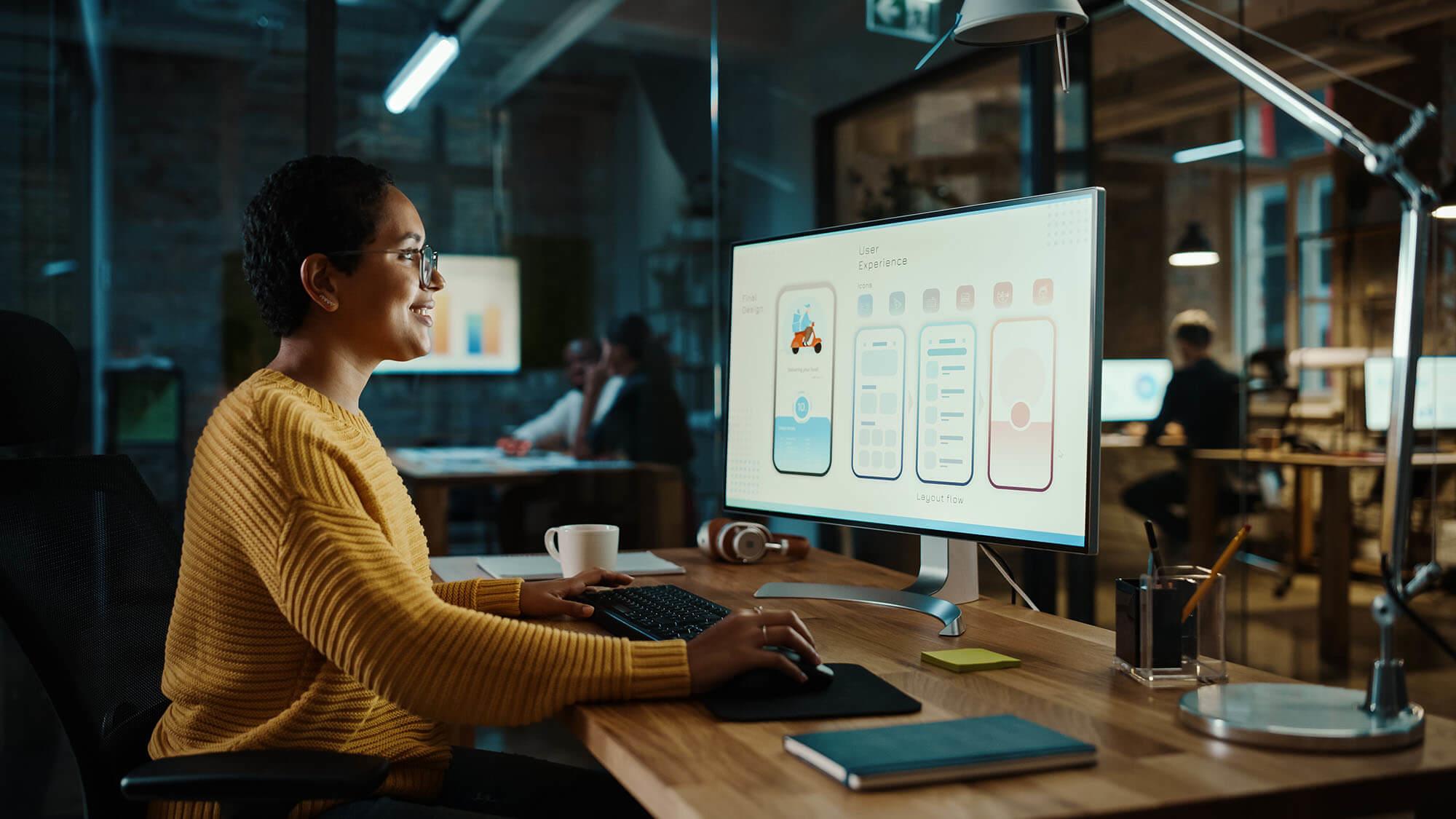The Very Best Types of Website Design to Boost Customer Experience and Interaction
In the ever-evolving landscape of electronic communication, the effectiveness of Web style significantly affects customer experience and involvement. Various style techniques, such as minimal, receptive, and interactive designs, each offer one-of-a-kind advantages that can satisfy diverse user needs. Comprehending which types of Web style best offer these objectives can be pivotal for organizations aiming to boost client contentment and retention. The inquiry stays: which style aspects really reverberate with individuals and foster significant interaction? The exploration of these concepts exposes important understandings that might redefine your method to Web layout.
Minimalist Website Design
As electronic landscapes come to be significantly cluttered, minimalist Web design has actually arised as an effective method to boosting customer experience. This layout ideology prioritizes simplicity, concentrating on essential elements while eliminating unnecessary diversions. By using ample white room, uncomplicated navigation, and a limited color palette, minimalist design cultivates clearness and routes customer interest to crucial content.
The core principle of minimal Web design is to develop a smooth communication for customers. By lowering cognitive lots, individuals can quickly understand information without feeling overwhelmed. This straight approach not only improves use but also motivates engagement, as visitors are most likely to explore a website that is very easy and visually appealing to navigate.
Furthermore, minimal design commonly stresses typography and imagery, using these elements strategically to convey messages effectively. This focus on essential elements can boost brand name identity and develop a memorable individual experience. Fundamentally, minimalist Web design is not just a fad; it is a thoughtful approach that recognizes the importance of user-centered layout. By stripping away nonessential components, designers can produce a much more appealing, reliable, and delightful Web experience for all users.
Responsive Web Layout
In today's varied digital atmosphere, responsive Web layout has actually come to be vital for producing a smooth user experience throughout a wide range of tools. As users accessibility web sites on smart devices, laptop computers, tablet computers, and desktops, the ability of an internet site to adjust its format and web content to various display dimensions and resolutions is vital.
Responsive Web style employs adaptable grids, photos, and CSS media queries to ensure that Web material exists optimally, no matter the tool utilized. This technique not only improves the aesthetic charm of an internet site but likewise considerably improves use. Customers are a lot more most likely to engage with a website that supplies a consistent experience, as it gets rid of the irritation of needing to focus or scroll excessively.
Furthermore, search engines, consisting of Google, prioritize mobile-friendly internet sites in search rankings. By adopting receptive style, organizations can improve their visibility and reach a more comprehensive target market. This technique also simplifies internet site maintenance, as a single variation of the website can satisfy all devices, minimizing the need for numerous variations. In summary, receptive website design is an essential method that improves individual experience, involvement, and general complete satisfaction.
Interactive Web Design
Receptive Web design lays the foundation for improving customer experience, yet interactive Web layout takes this a step additionally by engaging users in an extra vibrant way - Aligned Position Web Design. By including components such as animations, clickable prototypes, and real-time feedback, interactive website design mesmerizes customers, drawing them into a richer surfing experience
This approach not just cultivates involvement but additionally motivates customers to explore material actively instead than passively consuming it. Methods such as gamification, where individuals earn benefits for finishing jobs, can significantly boost the time spent on a website and enhance total contentment. Interactive functions can simplify complicated info, making it more absorbable and pleasurable.

Incorporating interactive layout elements can also lead to greater conversion rates, as individuals are most likely to engage with a website that proactively entails them. Aligned Position Web Design. Eventually, interactive Web style transforms customer experiences into remarkable journeys, making certain that site visitors return time after time
Apartment Design
Identified by its minimalistic approach, level layout highlights simpleness and capability, stripping away unnecessary elements and focusing on important functions. This layout philosophy focuses on usability, making certain that customers can browse user interfaces with ease and effectiveness. By utilizing a tidy visual, level style removes the mess typically found in a lot more elaborate styles, thus enhancing user concentrate on content and capability.
The trademark of flat layout hinges on its usage of strong colors, basic typography, and geometric forms. These elements add to a visually attractive user interface that is both friendly and modern. Additionally, level design promotes a feeling of clarity, allowing customers to recognize important actions and details without diversion.
Additionally, flat design is especially reliable in responsive Web design, as its simplicity equates well throughout various tools and display sizes. By concentrating on crucial functions, level design not only meets individual demands however also encourages seamless interaction, making it an important element of effective Web design strategies.
Flexible Website Design
Flexible Web web style personalizes the customer experience by producing several repaired layouts customized to various display sizes and tools. Unlike receptive style, which fluidly changes a solitary layout, adaptive design utilizes unique designs for certain breakpoints, making certain optimal presentation on various systems. This approach allows designers to focus on the unique qualities of each device, enhancing usability by delivering precisely what users need based on their context.
One of the key benefits of flexible Web layout is its ability to optimize tons times and efficiency. By offering customized content and pictures that fit the user's see post tool, websites can lessen data use and improve loading speeds. This is especially advantageous for individuals with slower links or limited data strategies.

Furthermore, flexible design promotes a more consistent and regulated branding experience. Since designers develop multiple layouts, they can make sure that the aesthetic elements line up with the brand name's identification across different systems - Aligned Position Web Design. This causes a cohesive user experience, boosting interaction and advertising customer retention
Conclusion
In final thought, the assimilation of minimal, receptive, and interactive website design principles dramatically enhances user experience and interaction. Minimalist style cultivates quality and emphasis, while receptive design guarantees versatility across different gadgets, advertising access. Interactive layout captivates users through dynamic aspects, motivating expedition and customization. Jointly, these layout comes close to add to the production of user-friendly environments that not only improve fulfillment yet additionally drive greater conversion rates, underscoring their important relevance in contemporary Web design strategies.

Minimalist style cultivates clarity and focus, while responsive design guarantees versatility across different gadgets, advertising access. Jointly, these layout comes close to add to the production of straightforward settings that not just enhance fulfillment yet likewise drive greater conversion rates, highlighting their important value in contemporary Web design strategies.